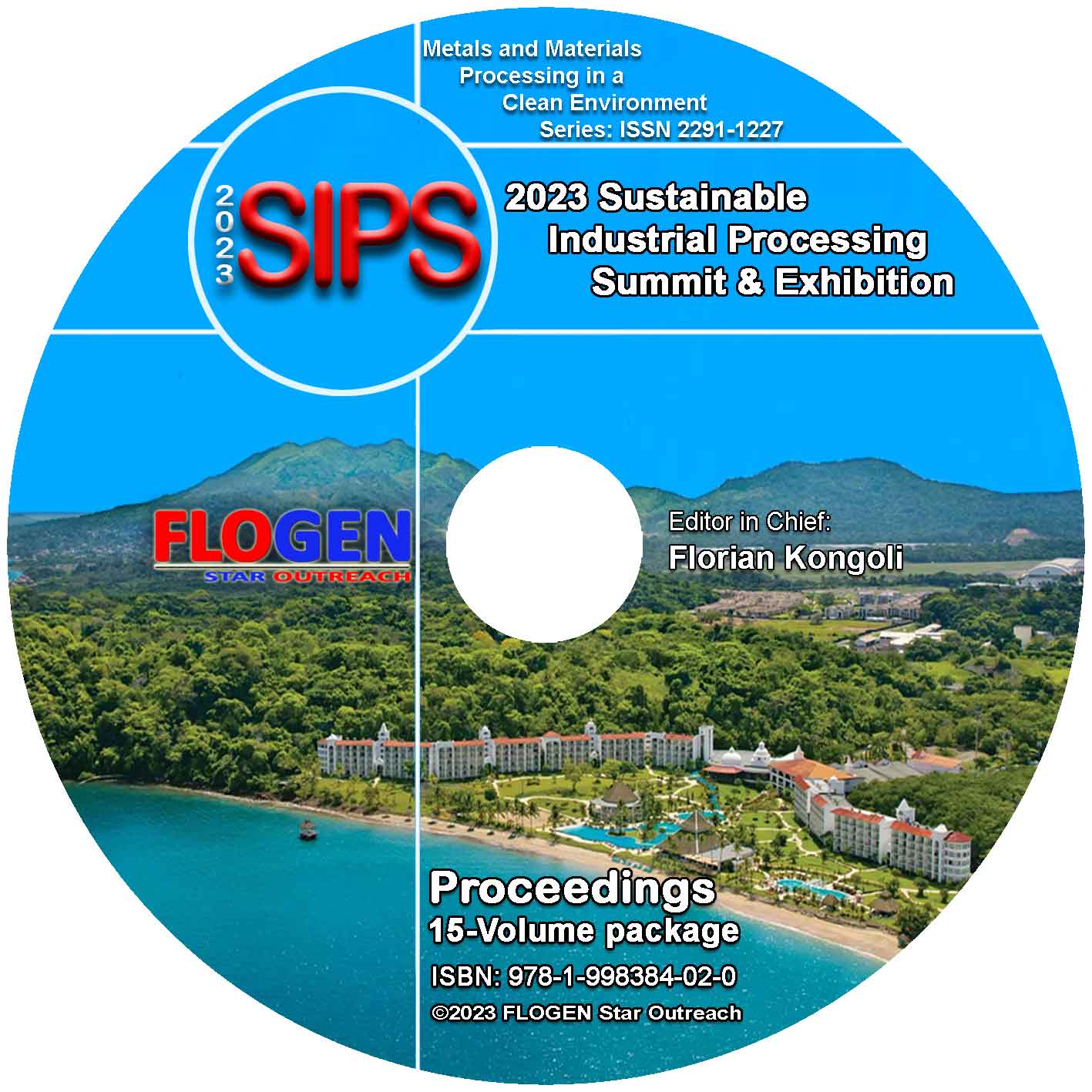2023-Sustainable Industrial Processing Summit
SIPS2023 Volume 9. Navrotsky Intl. Symp. / Geochemistry
| Editors: | F. Kongoli, M. Asta, C. Drouet, S.Hayun, R. Riedel, W. Sun |
| Publisher: | Flogen Star OUTREACH |
| Publication Year: | 2023 |
| Pages: | 142 pages |
| ISBN: | 978-1-989820-88-9 (CD) |
| ISSN: | 2291-1227 (Metals and Materials Processing in a Clean Environment Series) |

CD shopping page
DREAMING UP A TOOLBOX FOR STUDYING RADIATION-INDUCED PROCESSES ACROSS TEMPORAL AND SPATIAL SCALES
Carolyn Pearce1;1PACIFIC NORTHWEST NATIONAL LABORATORY, Richland, United States;
Type of Paper: Regular
Id Paper: 257
Topic: 67
Abstract:
Radiation-induced processes at and near interfaces are important in applications ranging from space travel to advanced nuclear technologies and environmental remediation of legacy radioactive waste [1]. It is the last of these applications that is the focus of the Department of Energy's (DOE) Energy Frontier Research Center – Interfacial Dynamics in Radioactive Environments and Materials (IDREAM). IDREAM’s mission is to master fundamental chemical phenomena and interfacial reactivity in complex environments characterized by extremes in alkalinity, low-water activity, and ionizing radiation. IDREAM focuses on the fundamental science that underpins the processing of highly radioactive legacy wastes stored in underground tanks at DOE Hanford and Savannah River Sites. These wastes contain large quantities of aluminum in solution and in solid aluminum (oxy)hydroxide phases, along with molar concentrations of sodium hydroxide, nitrate, nitrite, and radioactive materials that provide a continuous supply of transient species. At solid/liquid interfaces in the waste, radiation-induced reactions contribute in poorly understood ways to key processes including dissolution and precipitation. The magnitude of the effect depends on the fundamental details of energy deposition and energy transfer, through both the bulk material and the bulk solution to the interface. Less is known about these phenomena in extreme chemical environments, such as concentrated electrolytes, where low-water activity can create new interfacial structures through confinement of water and clustering of ions. Given the ever-growing nexus of extreme conditions associated with new energy systems and environmental materials, this area of radiation effects, minerals, and concentrated electrolytes is an important emerging frontier. We do not have the capacity to subject all materials and environments to radiation testing, therefore a mechanistic understanding is needed to predict performance. To this end, IDREAM has developed a toolbox of experimental and computational techniques for radiation studies across temporal and spatial scales. Using this toolbox, we have generated new knowledge of “early†events that occur during radiolysis of highly concentrated salt solutions, and at solid/solution interfaces, to inform a mechanistic understanding of processes and timescales. Based on this mechanistic understanding, we can develop strategies for quantitatively evaluating material performance to accelerate waste processing, and to inform generation and treatment of future nuclear waste.